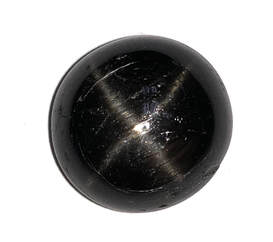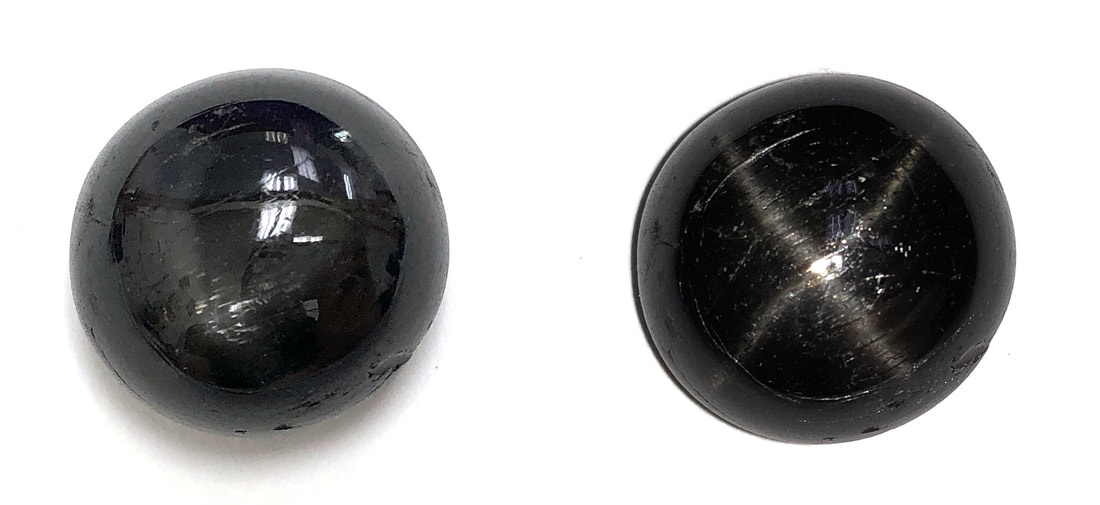STAR DIOPSIDE
|
Variety: Star
Species: Diopside Mohs Hardness: 8.5 out of 10 Color: Dark green to black, typically with a 4-rayed star RI: 1.68 Spot Reading Common Birefringence: 0.024 to 0.030 SR/DR/AGG: DR Clarity Type: Type II Optic Character: Biaxial positive Pleochroism: Usually not detectable Spectrum: Common line at 505nm Fluorescence: Usually inert SG: 3.29 (+0.11 / -0.07) |




